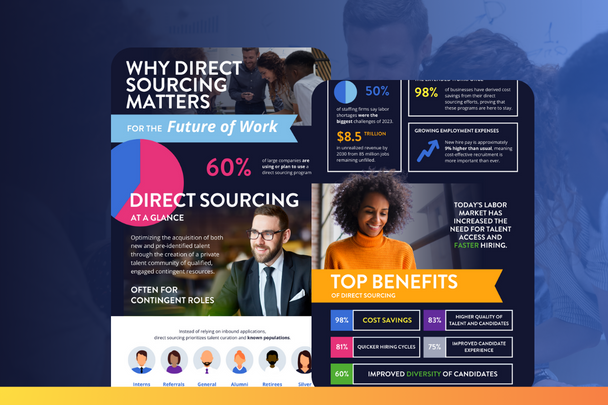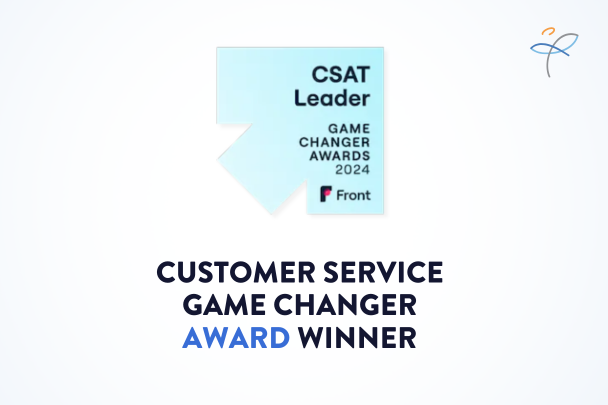Technology is changing how companies manage people. Having a strong HR Tech stack has become increasingly imperative for organizations to compete for talent, as well as keep pace with the rate at which the industry is advancing. However, making strategic investments can be challenging without a clear understanding of the proper use for each product. Systems can start to blend and keeping track of acronyms can cause your head to spin. Not only are there more options to choose from than ever before, but there are also many commonalities among features and functions of these next-generation systems. So, we’ve outlined all the ingredients in the Alphabet Soup of HR Tech to educate you on what features make the most sense for your business and what each piece of technology is truly built to do.
Some believe similar systems are interchangeable and that a good team can make anything work. But to achieve the most value for your company, you must first understand how each piece of technology is meant to perform. If you purchase a product and it’s not aligned with your company needs, you will not recognize your tech stack’s full capacity – leading to an extensive and exhausting implementation process and lower adoption rate.
APPLICATION PROGRAMMING INTERFACE (API)
Definition: A set of functions and procedures allowing the creation of applications that access the features of data of an operating system, application or other service. A software intermediary that makes it possible for application programs to interact with each other and share data.
When you need it: When there is a need for data to be shared between two separately existing pieces of software or technology. An example of leveraging an API for an HR specific-need may be to allow candidates to apply to open roles through a company’s ATS using their LinkedIn profile – leveraging an API between LinkedIn and their own applicant tracking system.
APPLICANT TRACKING SYSTEM (ATS)
Definition: A software application that enables the electronic handling of recruitment needs. This software streamlines the recruitment process often as a compliance requirement as the system of record for managing, storing and tracking applications and candidate data. Some systems may filter applications automatically based on given criteria. These systems are frequently integrated with a client’s website allowing applicants to search, view and apply to open positions.
When you need it: An ATS should be considered and would be beneficial for businesses who hire frequently, receive and screen close to 100 applications per month and hire for a diverse number of roles.
CANDIDATE RELATIONSHIP MANAGEMENT (CRM)
Definition: Technology used to streamline communication processes with candidates, encourage their engagement and improves the overall candidate experience. Used for sourcing – helping you pipeline, build targeted lists and nurture relationships with job seekers.
Synonyms: Talent Relationship Management (TRM)
When you need it: If a company is considering investing in an Applicant Tracking System (ATS) today, most systems will include some CRM functionality. CRM systems help automate much of the administrative data entry an ATS might require. In addition, a CRM should be considered if a company is looking to build campaigns to attract passive candidates to their brand or for harder-to-fill roles.
CONVERSATIONAL AI RECRUITMENT
Definition: Software which leverages artificial intelligence technology to attract, qualify and interact with candidates in real-time, continuous one-on-one messaging. Implemented into an existing recruitment process, this powerful tool helps reengage and automate outreach for candidate placements.
When you need it: When a company is seeking to redeploy their large “inventory” of talent. Conversational AI recruitment is appropriate for a company when their database is 10,000+ candidates and they would like to speed up the process of pre-screening candidates for current open jobs using SMS powered by chatbots.
FREELANCE MANAGEMENT SYSTEM (FMS)
Definition: A system solution to help companies manage their freelance workforce and freelancer engagements including onboarding, assignments, invoices and payments. In order to be considered a true FMS, the software must include the following steps: Search > Identify > Assign > Manage > Pay > Rate. Many FMS systems today include compliance services and access to online freelancer marketplaces.
When you need it: When a company has or utilizes a large freelancer / contract workforce population allowing an organization to manage this population directly and more efficiently. Optimal investment solution for short term needs, with frequent occurrences and high volume. Spend is $500k+ with 500-1,000 assignments or work orders for ICs annually. PRO TIP: when choosing the right FMS partner, if privacy of your freelancer talent pool is important to you, be sure to ask the FMS if their technology is a freelancer marketplace or private FMS solution.
HUMAN RESOURCES INFORMATION SYSTEM (HRIS)
Definition: Refers to technology intended to help an organization manage and maintain its workforce. The software provides a centralized repository of employee master data that the HR team needs for completing core human resource processes. This system also typically provides HR functions such as recruiting, applicant tracking, performance appraisals, compensation management and absence management, training and development, and benefits administration,
Synonyms: Human Resources Management System (HRMS), Human Capital Management (HCM)
When you need it: Historically, when your employee population was 5,000+, however recently HRIS companies have devised solutions catering to companies with smaller employee populations as low as 200 employees.
TALENT MANAGEMENT SYSTEM (TMS)
Definition: An integrated set of software applications that addresses the “four pillars” of talent management: recruitment and onboarding, performance management, learning and development, compensation management and succession planning.
When you need it: A useful tool for evaluating and analyzing employee history and performance. Optimal for mid and large size organizations looking to streamline management of post-hire activities involved in developing, motivating and retaining talent.
TALENT RELATIONSHIP MANAGEMENT (TRM)
Definition: A strategic tool employers use to source and maintain warm pipelines of talent for future recruitment. Talent pipelines consist of potential employees who are interested in working at a given employer if the optimal opportunity arises. TRM systems typically include enhanced matching algorithms.
Synonyms: Candidate Relationship Management (CRM)
When you need it: If an employer has a large influx of incoming candidates that need, they are active with onsite recruitment (career fairs) and need to track initiatives, if they have smaller marketing departments not dedicated to candidate engagement or if they are a smaller company without an already implemented ATS.
VENDOR MANAGEMENT SYSTEM (VMS)
Definition: Internet-enabled, often web-based application that acts as a mechanism for business to manage and procure staffing services as well as outside contract or contingent labor.
When you need it: Your company uses 10+ staffing agencies to fill contract positions and/or your contingent labor spend is $2M+. Note that many VMSs have spend minimums, so you may be limited in options if you spend is lower than $10M… which by the way, is not a bad thing! Less choices are sometimes better.








